Key Entryway Dimensions for Homes Large and Small
Find out what makes a foyer important, how much space it needs and how to scale its elements
Entrance areas are often given less priority when a home is being designed, but these spaces are just as important as any other. Not only do they provide an entry point and a transition from the elements of nature, but they are places your guests will likely remember most.
Entrances also allow you to enter your domain and embrace your private life. For that they must let you remove a coat, take off shoes, set down mail, stow an umbrella, greet your friends or do any other activity that involves arriving at home. What is fascinating about them is that they can accomplish these tasks in grand or simple ways, either in scale or decoration.
Entrances also allow you to enter your domain and embrace your private life. For that they must let you remove a coat, take off shoes, set down mail, stow an umbrella, greet your friends or do any other activity that involves arriving at home. What is fascinating about them is that they can accomplish these tasks in grand or simple ways, either in scale or decoration.
Foyer Size and Shape
Shapes and sizes of foyers should relate to the style and size of the house. A good rule of thumb is that the foyer is around 2 to 4 percent of the total square feet or meters of your house.
Grand foyers can measure 20 to 30 feet (6 to 9 meters) in both directions and be just as high. Modestly scaled foyers may be about 5½ ft. (1½ m) wide; the length, which holds a central hall with a stairway (not seen here) is likely 15 to 20 ft. (4½ to 6 m).
The width of a long foyer needs to be a minimum of 42 in. (107 centimeters) to feel right. Widths of 48 to 54 in. (122 to 137 cm) are better, while 60 to 72 in. (152 to 183 cm) will likely feel very generous. Here a niche in the brick wall, which was once an opening into the original house, provides a spot for a lamp and other accessories.
Shapes and sizes of foyers should relate to the style and size of the house. A good rule of thumb is that the foyer is around 2 to 4 percent of the total square feet or meters of your house.
Grand foyers can measure 20 to 30 feet (6 to 9 meters) in both directions and be just as high. Modestly scaled foyers may be about 5½ ft. (1½ m) wide; the length, which holds a central hall with a stairway (not seen here) is likely 15 to 20 ft. (4½ to 6 m).
The width of a long foyer needs to be a minimum of 42 in. (107 centimeters) to feel right. Widths of 48 to 54 in. (122 to 137 cm) are better, while 60 to 72 in. (152 to 183 cm) will likely feel very generous. Here a niche in the brick wall, which was once an opening into the original house, provides a spot for a lamp and other accessories.
Most people also need a coat closet within or immediately adjacent to this space, and that should be 24 inches (61 cm) deep and at least 36 in. (91 cm) wide with doors that are at least 24 in. (61 cm) wide and 80 in. (203 cm) tall. If you design a wide coat closet — say, more than 48 in. (122 cm) — give it a double door of at least 18 in.(46 cm) per panel. This will make access to its interior more convenient.
Single and Double Doors
Many entrance doors in American houses are 36 in. (91 cm) wide and 80 in. (203 cm) tall. If you are shopping for a front door, you will find an abundant range of choices in this size.
Double doors are another option, provided you have the space for them. You can find pairs that are 30 in. (76 cm) wide each, making an opening that is 60 in. (152 cm) wide. More common is a pair of doors that are each 36 in. (91 cm) wide. At 6 ft. (2 m) in width total, it takes generous wall space and a larger-than-average foyer to handle them.
Double doors are designed with an active side and a passive side — that is, one of the doors will act as the one you most frequently open. The other door is considered passive, though it can be opened as well, but it stays in place most of the time. When specifying double doors, be certain to consider this question carefully. It often makes a difference as to which side you will want to open more often.
Find a local door dealer
Many entrance doors in American houses are 36 in. (91 cm) wide and 80 in. (203 cm) tall. If you are shopping for a front door, you will find an abundant range of choices in this size.
Double doors are another option, provided you have the space for them. You can find pairs that are 30 in. (76 cm) wide each, making an opening that is 60 in. (152 cm) wide. More common is a pair of doors that are each 36 in. (91 cm) wide. At 6 ft. (2 m) in width total, it takes generous wall space and a larger-than-average foyer to handle them.
Double doors are designed with an active side and a passive side — that is, one of the doors will act as the one you most frequently open. The other door is considered passive, though it can be opened as well, but it stays in place most of the time. When specifying double doors, be certain to consider this question carefully. It often makes a difference as to which side you will want to open more often.
Find a local door dealer
Sidelights and Transoms
Sidelights and transoms can be found in many traditional configurations. Traditional-style American sidelights are usually 12 or 18 in. (30 or 46 cm) wide, and transoms (a window above the top frame of a door or window) will fit in a header height of 96 in. (244 cm) when combined with an 80-in. (203-cm) door.
You can buy an entire single door or set of double door and sidelight(s), with or without transoms, in a packaged group from many manufacturers. Expect these doors to range from 60 to 96 in. (152 to 244 cm) in width and from 80 to 120 in. (203 to 304 cm) in height.
Sidelights and transoms can be found in many traditional configurations. Traditional-style American sidelights are usually 12 or 18 in. (30 or 46 cm) wide, and transoms (a window above the top frame of a door or window) will fit in a header height of 96 in. (244 cm) when combined with an 80-in. (203-cm) door.
You can buy an entire single door or set of double door and sidelight(s), with or without transoms, in a packaged group from many manufacturers. Expect these doors to range from 60 to 96 in. (152 to 244 cm) in width and from 80 to 120 in. (203 to 304 cm) in height.
Ceiling Heights
Standard American ceilings were 8 feet for many years, but more recent trends have made 9- and 10-foot ceilings more common. Of course, you may have a two-story house with an open foyer, and your ceiling may reach the height of the second floor, which would be a minimum of 17 ft. (5 m) to the full height of the upper level.
Standard American ceilings were 8 feet for many years, but more recent trends have made 9- and 10-foot ceilings more common. Of course, you may have a two-story house with an open foyer, and your ceiling may reach the height of the second floor, which would be a minimum of 17 ft. (5 m) to the full height of the upper level.
Wall Thickness
This contemporary rustic mountain home by BCV Architects in a California ski resort area has a wide glass entrance door set within arched sidelights and an arched transom. Configurations like this are custom. The refined details of the finishes and the scores in the concrete floor give this modern space unique character.
You will notice that the interior arches are thicker than the other walls. This may or may not be for structural reasons, but the heft of this detail emphasizes the foyer’s importance. If you want this effect, make those walls at least 8 in. (20 cm) and at most 18 in. (46 cm) thick; 12 in. (30 cm) might work well enough.
This contemporary rustic mountain home by BCV Architects in a California ski resort area has a wide glass entrance door set within arched sidelights and an arched transom. Configurations like this are custom. The refined details of the finishes and the scores in the concrete floor give this modern space unique character.
You will notice that the interior arches are thicker than the other walls. This may or may not be for structural reasons, but the heft of this detail emphasizes the foyer’s importance. If you want this effect, make those walls at least 8 in. (20 cm) and at most 18 in. (46 cm) thick; 12 in. (30 cm) might work well enough.
Entryway Design Ideas
The traditional Connecticut foyer by Hollester Interiors shown here is generously proportioned and acts as a central circulation route as well. The spacious room has an area for the entrance door, a landing for the stairs, places for tables on which to set things, and benches and chairs. A foyer of this type needs to be 15 to 20 ft. (4½ to 6 m) wide and long to function with this capacity. Notice the extra-wide plank floors, which coordinate with the larger scale of the space.
The traditional Connecticut foyer by Hollester Interiors shown here is generously proportioned and acts as a central circulation route as well. The spacious room has an area for the entrance door, a landing for the stairs, places for tables on which to set things, and benches and chairs. A foyer of this type needs to be 15 to 20 ft. (4½ to 6 m) wide and long to function with this capacity. Notice the extra-wide plank floors, which coordinate with the larger scale of the space.
First Street Builders
This new traditional Craftsman house also has a standard size entrance door, 36 in. (91 cm) wide and 80 in. (203 cm) tall, and there is also a transom above it that helps it to relate to the taller door of the coat closet.
The overall size of this foyer is generous and includes a built-in bench where shoes can be removed. The seat height of a bench should be around 14 to 15 in. (36 to 38 cm). Notice that the coat closet door is relatively narrow. Doors narrower than 24 in. (61 cm) can be difficult to find off the shelf.
This new traditional Craftsman house also has a standard size entrance door, 36 in. (91 cm) wide and 80 in. (203 cm) tall, and there is also a transom above it that helps it to relate to the taller door of the coat closet.
The overall size of this foyer is generous and includes a built-in bench where shoes can be removed. The seat height of a bench should be around 14 to 15 in. (36 to 38 cm). Notice that the coat closet door is relatively narrow. Doors narrower than 24 in. (61 cm) can be difficult to find off the shelf.
This contemporary Mediterranean entry by Ryan Street & Associates is modestly scaled but highly refined in detail. The arched glass entrance door with sidelights was likely custom fabricated, and a unique low and square baseboard gives this space individuality. This arrangement measures about 66 to 72 in. (168 to 183 cm) wide and 72 to 96 in. (183 to 244 cm) long. The narrow table provides a place for accessories.
In this transitional-style house by JCD Custom Home Design, two interior arches are reflected in the transom. Sidelights with glazed upper sections and a paneled lower one complement the four-panel entrance door. This foyer is about 72 in. (183 cm) wide and runs approximately the length of the adjacent room, about 15 ft. (4½ m). Notice that a closet is at left, conveniently placed aside the footprint of the foyer. A long and narrow table lines the opposite wall and provides a place on which to set things.
Shop for narrow console tables
Shop for narrow console tables
Contemporary architecture can interpret traditional configurations, as shown in this Australian addition by
Klopper and Davis Architects. A sidelight and transom of a single pane each accompany the colorful slab entrance door. This long and narrow foyer pays homage to the original 1920s bungalow to which it was added with its embossed ceiling and exposed brick.
Klopper and Davis Architects. A sidelight and transom of a single pane each accompany the colorful slab entrance door. This long and narrow foyer pays homage to the original 1920s bungalow to which it was added with its embossed ceiling and exposed brick.
Paris K Interior Design
This airy contemporary entrance hall in New York gets more light from a skylight in the upper-level roof. A bridge helps to define the extent of the foyer and provides a scenic vantage point from which to enjoy the interior plants and stone wall from above. Notice the slate floor as another indication of this foyer’s extent.
More on Houzz
Read more remodeling guides on standard measurements
Find a local remodeling or decorating professional
Shop for entryway products
This airy contemporary entrance hall in New York gets more light from a skylight in the upper-level roof. A bridge helps to define the extent of the foyer and provides a scenic vantage point from which to enjoy the interior plants and stone wall from above. Notice the slate floor as another indication of this foyer’s extent.
More on Houzz
Read more remodeling guides on standard measurements
Find a local remodeling or decorating professional
Shop for entryway products
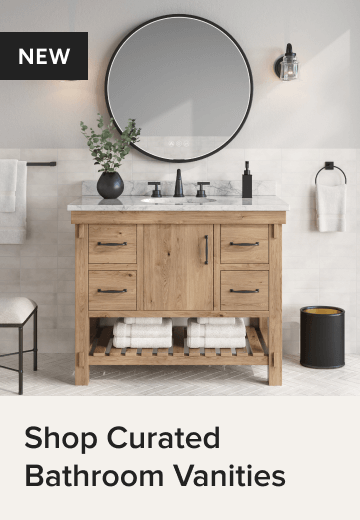
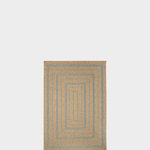
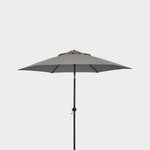
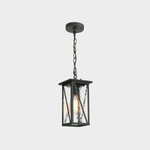


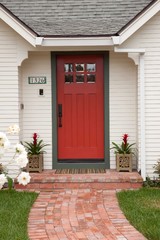








An entrance door is centered within each foyer and each has a chandelier, albeit of considerably different magnitudes. Each also has a beautiful table, upon which rests a vase of flowers. Mirrors allow the play of light and provide reflection, and color adds emphasis.
These elements are common to many entries. Attention to the scale of the details and the execution of the design make them successful here.
Design your entry with an architect on Houzz